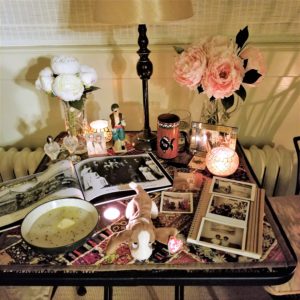
I created my first ancestor altar in 2020, eight months into the pandemic and on the eve of the presidential election. It was at a time when I could better understand the fear and struggle that my ancestors endured so that their children would not only survive, but hopefully thrive. As we literally “fall deeper” into the season – when ancient wisdom says that the veil between the seen and unseen worlds are at the thinnest, it is the perfect time to remember and give thanks from whence we came.
While visiting Peru in 2015, one of our cultural stops was at a cemetery. Surrounded by brick walls, it stood next to a giant, mostly-empty plaza lined with vendors of fresh flowers and curious trinkets like tiny Coca-Cola bottles or miniature sewing machines. Our guide (wearing a hat depicting the sacred Andean condor) stopped to purchase fresh flowers before we entered the cemetery.
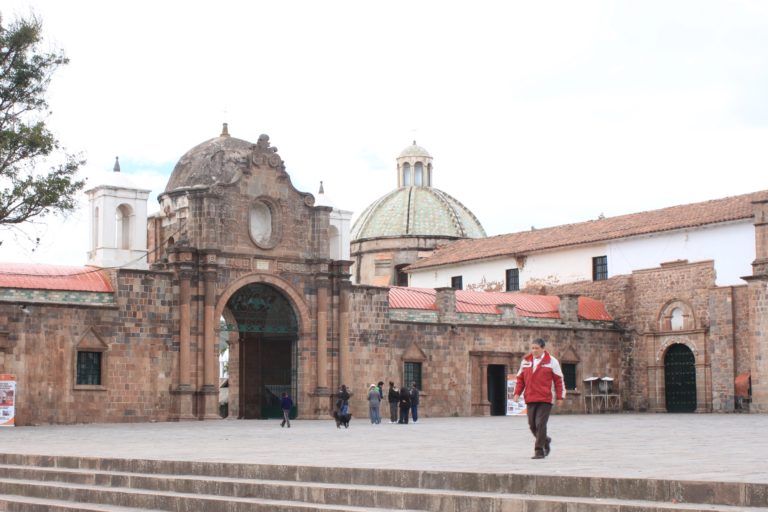
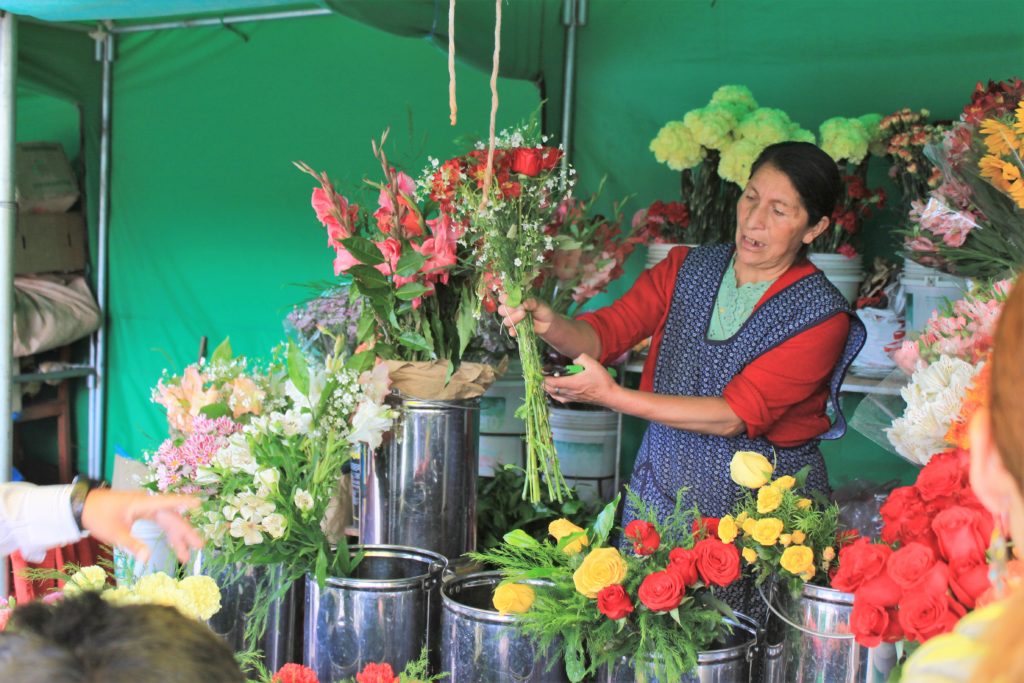
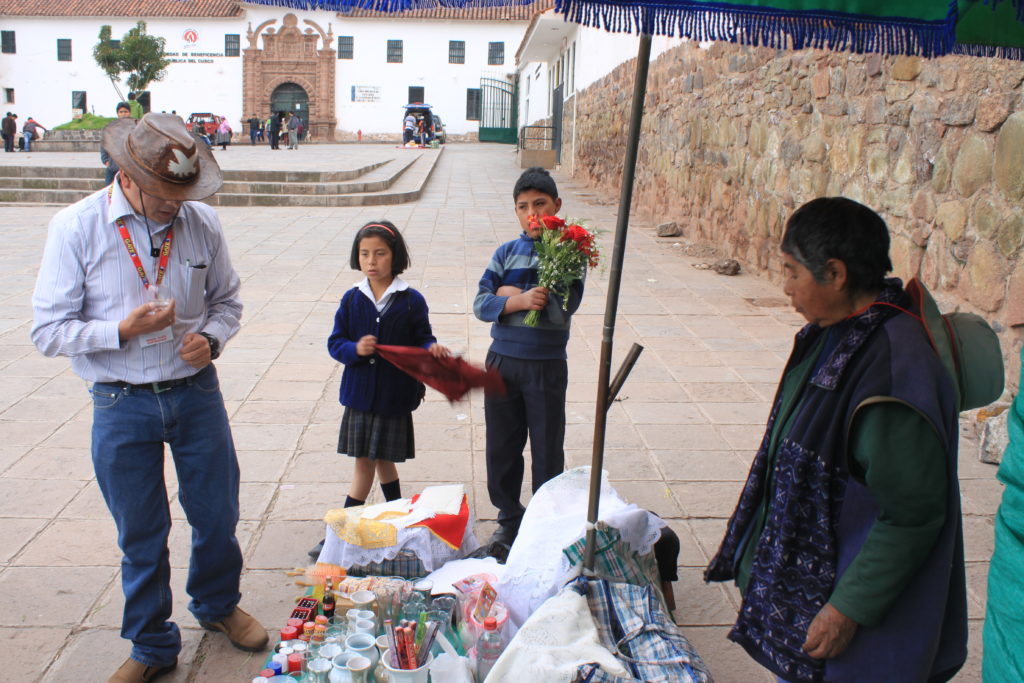
Such vendors are located immediately outside cemeteries for families to purchase items to decorate the niches of their deceased loved ones. (Although this cemetery contained some vaults and tombs, “niches” tend to be the most common form of interment.) The curios represent the loved one’s interests and experiences in life. For many families, incorporating “reminders” of a loved one’s life helps show honor and respect to that family member, while also allowing strangers to learn more about them, and deepening the connection from one world to the next.
Some niches were quite intricate. Coca-Cola has a huge presence in Peru, so tiny bottles of Coke products were ubiquitous. You can see an orange Fanta bottle in the niche below, next to a miniature sewing machine and Peruvian rail train.
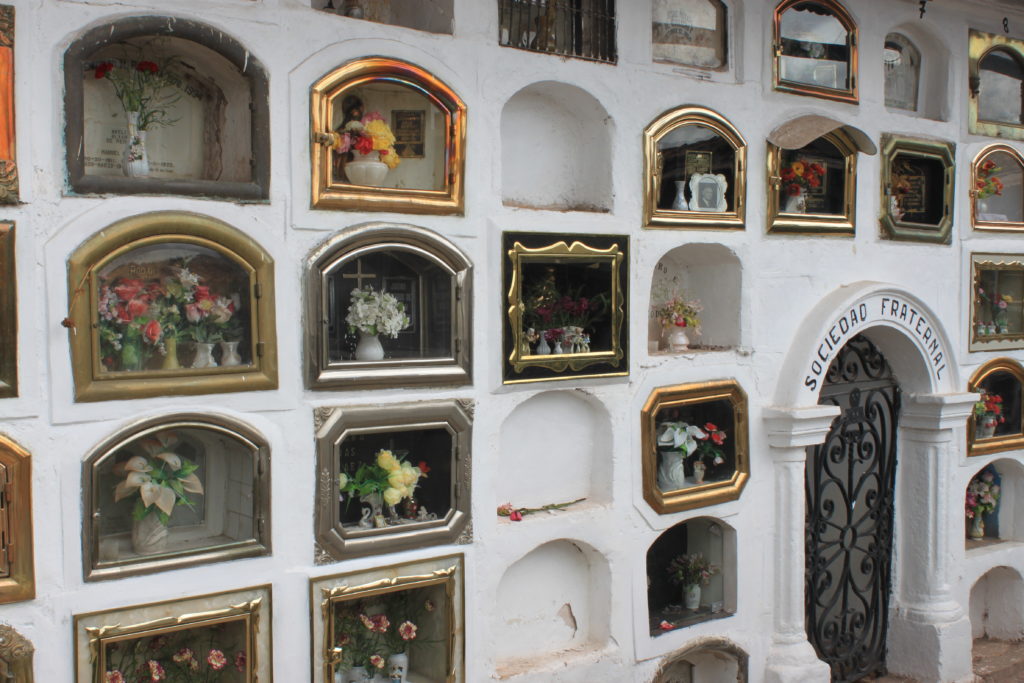
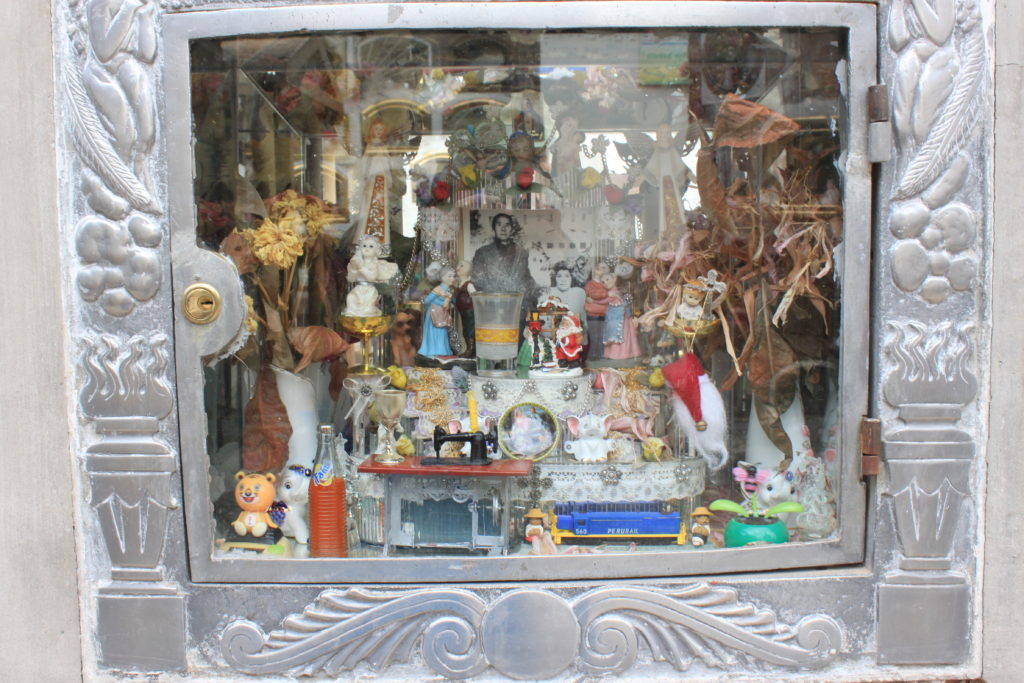
Many of the niches are rimmed in metal that tarnishes. The two children that our guide had “hired” for our trip were put to work scrubbing the muck away from a couple of the lower niches. In addition to demonstrating the care normally taken for the niches, it was another way (in addition to the flowers purchased above) to show our gratitude and respect to these ancestors for allowing us to learn about their customs.
Families regularly visit and congregate at the cemetery to talk to their loved ones, let them know what is happening, ask for their advice or blessings, and include them in celebrations. While we were visiting, a couple of musicians hired by a family strummed lively folk tunes while the family unpacked their lunch. (Although we really wanted a picture of the grill that was rolled in to cook on, we didn’t want to intrude on the family’s privacy. However, we did receive the OK to photograph the guitarists.)
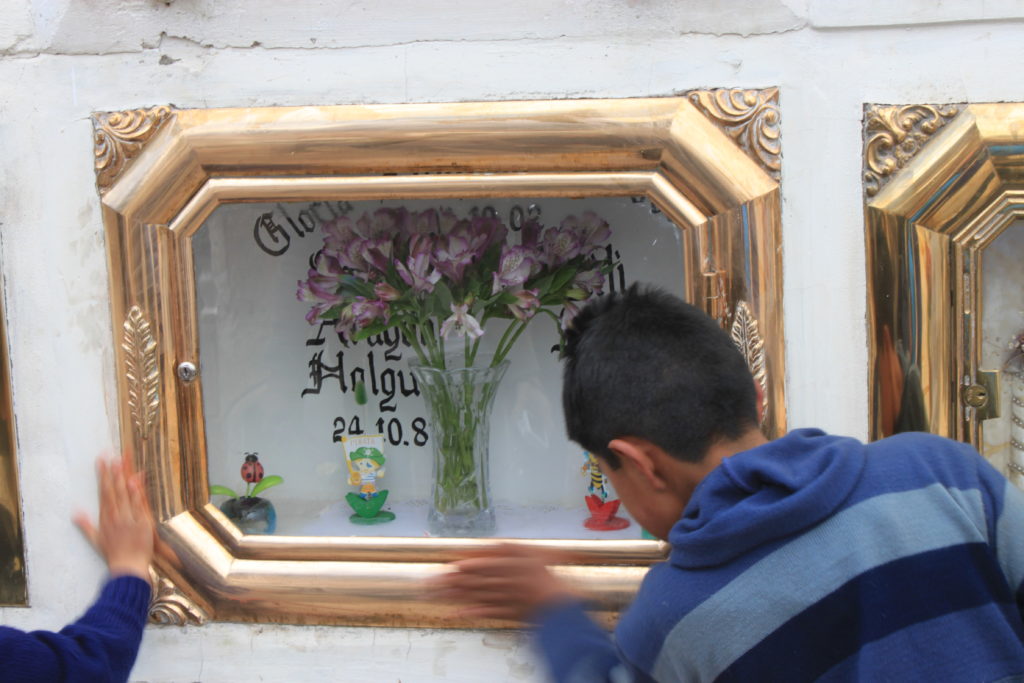
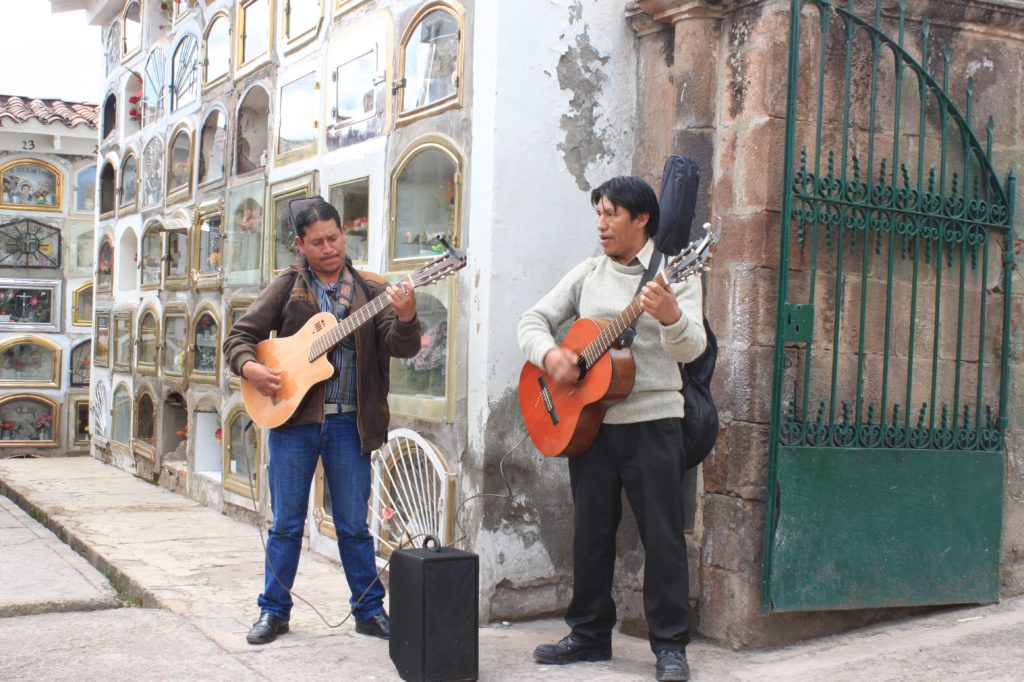
Last year I felt a desire for stronger connection with my immediate ancestors. Since it was close to November 1, I decided to research the customs around Día de Muertos, or Day of the Dead. According to Wikipedia, an ofrenda (Spanish: “offering”) is a home altar with a collection of objects placed on a ritual display during the annual and traditionally Mexican Día de Muertos celebration. The altars are typically decorated with bright yellow marigold flowers, photos of the departed, and their favorite food and drinks.
Although it is usually created for an individual who has passed, I wanted to create an ofrenda for multiple ancestors. Since I was creating the space on October 31, I worked with what I had on hand: silk peonies, candles, photos, a bowl of grits (with lots of butter!) for my father, coffee for my grandparents. Remembering our cemetery visit in Peru, I included curios that reminded me of my loved ones: a pair of crystal salt and pepper shakers, an Old Spice decantor, a Peruvian mug from childhood (coincidentally!). I also included a basset beanie baby for the many bassets that have been a part of my life.
I kept the ofrenda up for several days (sans the food). It was centrally located so I passed it frequently as I walked around the house. It also reminded me of pictures our Malaysian exchange student had shared with us of his family’s altars, as well as the altars tucked into our local Thai restaurants. Visibly and routinely honoring the ancestors is an integral part of so many cultures worldwide.
I am looking forward to creating another ofrenda this year. I want to thank my ancestors for their love and their sacrifices and let them know that I’m doing well, despite the current craziness (and, by the way, is there anything they could do about that?).
Do you have a practice or ritual that honors those who came before you? An ofrenda is a lovely way to begin. And if you need some inspiration, watch Coco!
